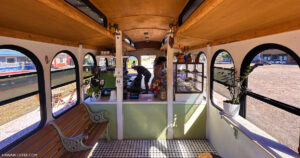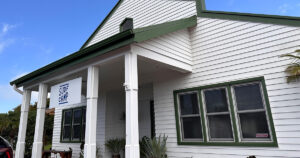What’s So Special About Kona Coffee—and What Other Coffees Compare to It?
Genuine Kona coffee has been prized around the globe for over 147 years when it first received international accolades at the 1873 World’s Fair in Vienna. In the decades that followed, it went from a locally-loved beverage to one of the planet’s most esteemed delicacies. As such, pure Kona coffee comes at a pretty price—it’s one of the most expensive coffees in the world—but, with its bright, complex notes, it’s well worth the cost.
And yet, for those new to the brew, some may ask, what is so extraordinary about Kona coffee—and do any other coffees compare to it? Let’s have a look.
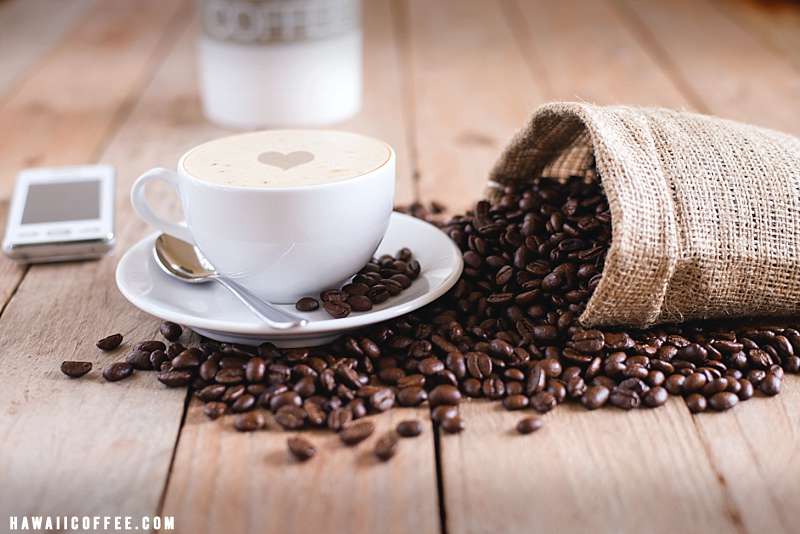
1. Where It’s Sourced—and That Lovely Hawaiian Weather
Kona coffee can only be grown in one location in the world—Kona, of course! Located on the volcanic slopes of Hualalai and Mauna Loa on Hawaii’s Big Island, this narrow, famed region—a mile wide and roughly 30 miles long—boasts ideal growing conditions, from the morning sunshine to noontime cloud coverage to afternoon rain. As former Kona coffee farmer, Timothy Bruno put it, “The sun is great for the trees in the morning and the clouds roll in just when the sun is at its strongest. As the sun warms the ocean waters, the air expands, pushing the moist air up the mountain where it condenses, forming clouds and precipitation. The resulting afternoon and evening rains make sure that the plants stay properly hydrated…It is a climate perfectly suited for coffee growing.” What’s more, the mineral-rich, porous volcanic soil in which Kona coffee is grown ensures that its trees flourish—and yields coffee cherries that are uber-rich in flavor.

2. Despite its Widespread Popularity, It Makes Up Only 1% of Coffee Grown Around the Globe
A rarity Kona coffee is, comprising a mere 1% of the global production of coffee. Other coffee cultivated in Hawaii is simply known as Hawaiian coffee (and carries flavors and bodies that are just as rich). Because Kona coffee can only be grown in a small, ultra-specific part of the planet, it holds a similar distinction to French champagne and Scottish whiskey.

3. Kona Coffee is Given Tons of TLC
During “picking season,” Kona coffee trees are handpicked, and multiple times at that. This is a meticulous process, as only cherries at their peak maturity are harvested. The beans are then separated by grade—more on this below—before being wet-method processed (or pulped, fermented, and completely washed in clean water), sun-dried or dried in a temperature-controlled room, roasted, and packed. Naturally, this diligence is labor-intensive, which is reflected in the cost of Kona coffee. By comparison, other commercial coffee farms use machines to pick their coffee trees. One estimate suggests that it costs three cents per pound to pick coffee mechanically. Handpicking Kona coffee trees, on the other hand, comes to 75-80 cents per pound.
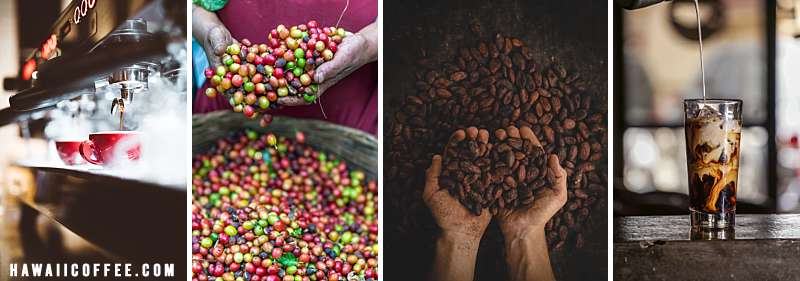
4. It Has a Wonderful, Universal Flavor
Plenty of superlatives are used to describe genuine Kona coffee—and each one stands true. Kona coffee is mild and subtle (read: it’s perfect for many palates), but it also holds notes of milk chocolate, brown sugar, fruit, and honey. Its aroma is equally delicious, with wafts of caramel, butter, and cocoa.
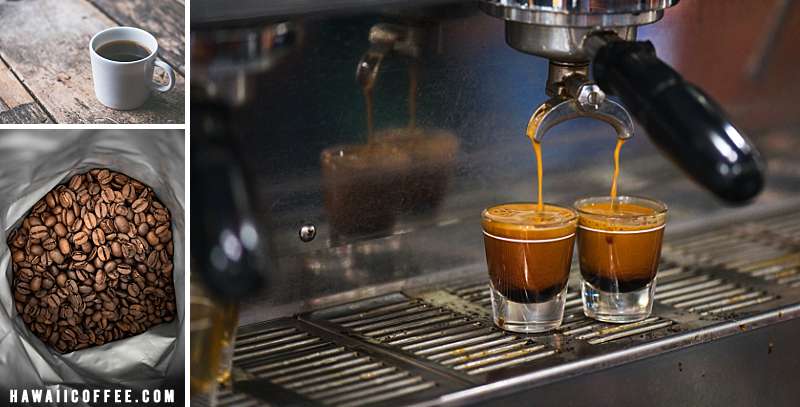
5. Its Quality is Guaranteed by Vigorous State Standards and Grades
Shop for Kona coffee, and you may get dizzy with the sheer amount of choices. While genuine Kona coffee must be grown in Kona, not all coffees from this region are created equal. Extra Fancy Kona coffee is the highest grade coffee, followed by Fancy (high grade), Kona #1 (a mid-grade coffee commonly used in restaurants), and Prime, the lowest grade. Additionally, because 100% pure Kona coffee comes with a hefty price tag, many companies create Kona blends. While these blends aren’t as superb as the higher grades, they’re nonetheless satisfying and flavorful. “Kona blends” contain some Kona coffee but are also combined with other Hawaiian and non-Hawaiian coffees to create a brew that retains Kona coffee’s pleasant, cheery taste. Through 2003’s the Hawaii State Truth in Labeling Law, Hawaii guarantees that these blends contain at least 10% Kona coffee. That said, this law does not extend beyond the Aloha State’s border, and Kona coffee fraud, if you will, has become ubiquitous. In the 1990s, for example, Kona Kai Farms, a company out of Berkeley, California, was sued by Kona coffee farmers for marketing “Kona” coffee that was anything but. In other words? All the more reason to purchase your Kona coffee only from Hawaiian sources.

6. Kona Coffee Has a Rich History
Gone are the first two waves of coffee, the first being the trend in which coffee was a widely accessible commodity (with far less focus than now on flavor), the second being the chain stores that introduced customizations such as vanilla flavoring and extra foam. In the third wave we’re presently riding, coffee consumers have grown increasingly interested in where their coffee was sourced, like if it was ethically harvested—and the story behind it. Kona coffee scores points on all three, with its exotic growing location, its small-farmer, fair-trade principles, and the rich history behind it. First introduced to the islands by Oahu’s governor Boki, Kona coffee got its start in 1828 when Samuel Ruggles planted seedlings on the Big Island’s westward volcanic slopes. In the years that followed, “kope,” as it was called by native Hawaiians, underwent periods of both expansion and contraction—eras that paralleled global events such as World Wars I and II, the Gold Rush, and the annexation of Hawaii by the United States. In the 1980s, coffee enthusiasts began turning towards more justly-sourced coffee—and coffee with more quality taste—and Kona coffee, once again, enjoyed a resurgence. In sum, it’s a story for the record books.
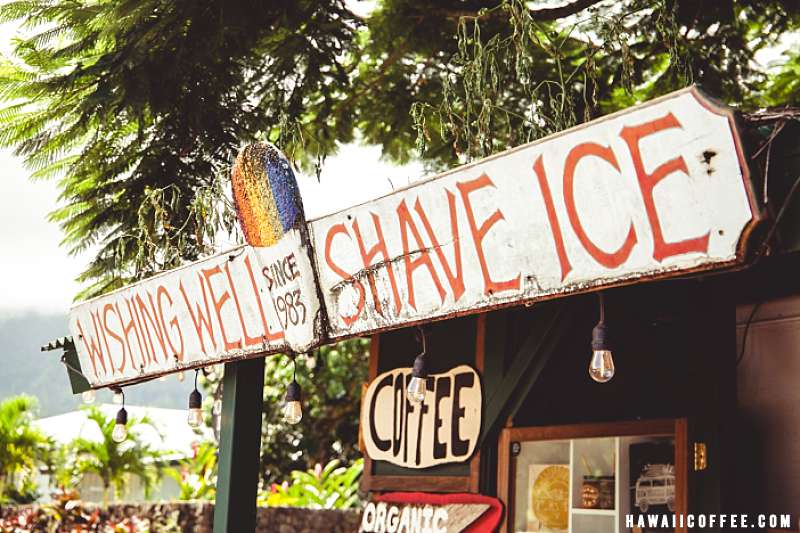
Lastly, can any other coffees compare with Kona Coffee?
Depends on who you ask. Kona coffee aficionados will likely argue that Kona coffee is such a singular brew that no other coffee can compare. Others may say that other Hawaiian coffees possess notes and acidities similar to Kona coffee. Others still suggest that lighter brews that are freshly roasted—such as Ethiopian Sidamo—bear the vibrant tones of Kona coffee. Our advice? If you have a hankering for a crisp, clean cup of savory coffee, splurge on Kona. It’s worth its weight in gold. Or, look into a Hawaii coffee blend that suits your needs. Regardless, you’ll be transported back to the islands with some delicious Hawaii coffee!
